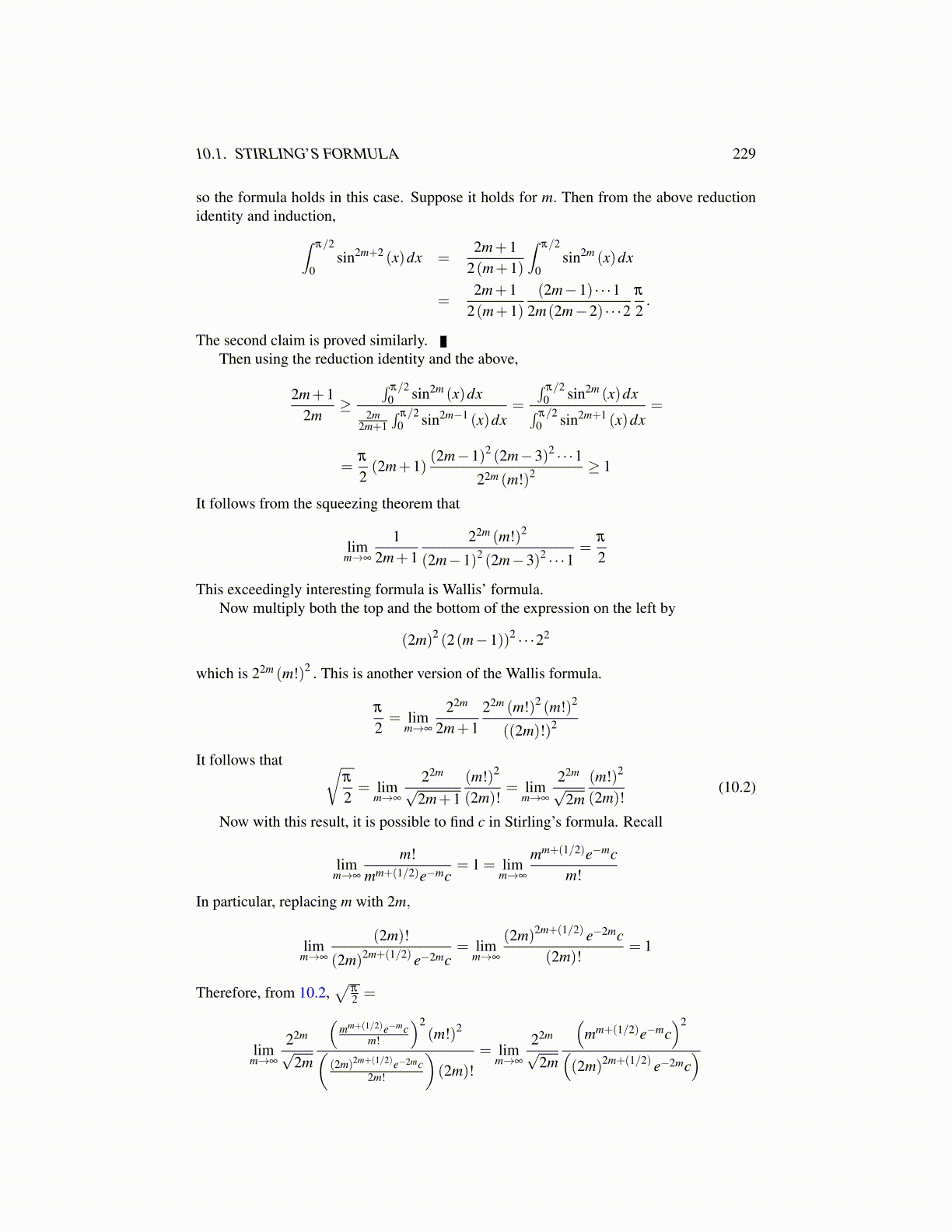
10.1. STIRLING’S FORMULA 229
so the formula holds in this case. Suppose it holds for m. Then from the above reductionidentity and induction,∫
π/2
0sin2m+2 (x)dx =
2m+12(m+1)
∫π/2
0sin2m (x)dx
=2m+1
2(m+1)(2m−1) · · ·1
2m(2m−2) · · ·2π
2.
The second claim is proved similarly.Then using the reduction identity and the above,
2m+12m
≥∫ π/2
0 sin2m (x)dx2m
2m+1∫ π/2
0 sin2m−1 (x)dx=
∫ π/20 sin2m (x)dx∫ π/2
0 sin2m+1 (x)dx=
=π
2(2m+1)
(2m−1)2 (2m−3)2 · · ·122m (m!)2 ≥ 1
It follows from the squeezing theorem that
limm→∞
12m+1
22m (m!)2
(2m−1)2 (2m−3)2 · · ·1=
π
2
This exceedingly interesting formula is Wallis’ formula.Now multiply both the top and the bottom of the expression on the left by
(2m)2 (2(m−1))2 · · ·22
which is 22m (m!)2 . This is another version of the Wallis formula.
π
2= lim
m→∞
22m
2m+122m (m!)2 (m!)2
((2m)!)2
It follows that √π
2= lim
m→∞
22m√
2m+1(m!)2
(2m)!= lim
m→∞
22m√
2m(m!)2
(2m)!(10.2)
Now with this result, it is possible to find c in Stirling’s formula. Recall
limm→∞
m!mm+(1/2)e−mc
= 1 = limm→∞
mm+(1/2)e−mcm!
In particular, replacing m with 2m,
limm→∞
(2m)!
(2m)2m+(1/2) e−2mc= lim
m→∞
(2m)2m+(1/2) e−2mc(2m)!
= 1
Therefore, from 10.2,√
π
2 =
limm→∞
22m√
2m
(mm+(1/2)e−mc
m!
)2(m!)2(
(2m)2m+(1/2)e−2mc2m!
)(2m)!
= limm→∞
22m√
2m
(mm+(1/2)e−mc
)2((2m)2m+(1/2) e−2mc
)